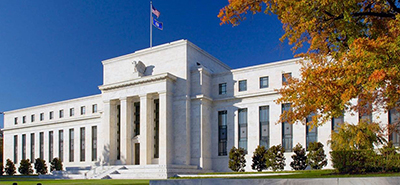
Fed Raises Rate to 15-Year High

The Federal Open Market Committee, as expected, raised the federal funds rate by 75 basis points on Wednesday to its highest level since 2008.
The federal funds rate now stands at 3.75-4.00 percent. Wednesday’s increase marked the sixth rate hike since March (when the rate was 0-0.25 percent) and the fourth consecutive increase of 75 basis points.
“The Committee seeks to achieve maximum employment and inflation at the rate of 2 percent over the longer run,” the FOMC said in its policy statement. “In support of these goals, the Committee decided to raise the target range for the federal funds rate.”
“The financial markets correctly anticipated that the Federal Reserve would increase the federal funds rate by another 75 basis points at its November meeting,” said Mike Fratantoni, Chief Economist with the Mortgage Bankers Association. “With inflation still running far too high, and the job market remaining strong, MBA expects the Fed to increase rates by another 75 basis points before holding them steady throughout 2023.”
Fratantoni noted mortgage rates remain above 7 percent. “[This] has caused refinance activity to effectively stop and home purchase activity to slow markedly,” he said. “The combination of elevated mortgage rates and steep home-price growth over the past few years has greatly reduced affordability. The volatility seen in mortgage rates should subside once inflation begins to slow and the peak rate for this hiking cycle comes into view.”
Odeta Kushi, Deputy Chief Economist with First American Financial Corp., Santa Ana, Calif., said the 75 basis-point increase could be the last of that magnitude, although more increases are expected.
“The goal of the Fed’s monetary tightening is to cool demand and bring prices under control,” Kushi said. “While the housing market is slowing, other corners of the economy have yet to follow suit. The Fed will likely be watching for sustained, data-driven signs of cooling in the labor market, and specifically wage growth, before it eases the pace of rate hikes.”
Kushi noted in the interest-rate sensitive sector of housing, that policy is working. “The housing market is cooling from the red-hot pace of the past two years,” she said. “In other corners of the economy, especially the labor market, the Fed is not yet seeing the same swift pullback in demand. The unemployment rate remains low, while wage growth, especially in the service sector remains high. Fed officials are concerned that high wage growth will lead to inflation becoming entrenched, feeding into a cycle of businesses and consumers expecting ever higher prices.”
Kushi also noted household spending has started to show signs of weakness, but remains strong, despite price increases on essentials such as food. “Real personal spending grew faster than personal income in September, indicating that households are drawing down savings to finance spending,” she said. “High inflation and rising rates hurt household budgets, but 66% of households have an inflation hedge – housing. Many owners locked-in low rates on 30-year, fixed mortgages. Combined with a strong labor market, consumers are feeling confident enough to continue spending.”
The full FOMC statement appears below:
“Recent indicators point to modest growth in spending and production. Job gains have been robust in recent months, and the unemployment rate has remained low. Inflation remains elevated, reflecting supply and demand imbalances related to the pandemic, higher food and energy prices, and broader price pressures.
“Russia’s war against Ukraine is causing tremendous human and economic hardship. The war and related events are creating additional upward pressure on inflation and are weighing on global economic activity. The Committee is highly attentive to inflation risks.
“The Committee seeks to achieve maximum employment and inflation at the rate of 2 percent over the longer run. In support of these goals, the Committee decided to raise the target range for the federal funds rate to 3-3/4 to 4 percent. The Committee anticipates that ongoing increases in the target range will be appropriate in order to attain a stance of monetary policy that is sufficiently restrictive to return inflation to 2 percent over time. In determining the pace of future increases in the target range, the Committee will take into account the cumulative tightening of monetary policy, the lags with which monetary policy affects economic activity and inflation, and economic and financial developments. In addition, the Committee will continue reducing its holdings of Treasury securities and agency debt and agency mortgage-backed securities, as described in the Plans for Reducing the Size of the Federal Reserve’s Balance Sheet that were issued in May. The Committee is strongly committed to returning inflation to its 2 percent objective.
“In assessing the appropriate stance of monetary policy, the Committee will continue to monitor the implications of incoming information for the economic outlook. The Committee would be prepared to adjust the stance of monetary policy as appropriate if risks emerge that could impede the attainment of the Committee’s goals. The Committee’s assessments will take into account a wide range of information, including readings on public health, labor market conditions, inflation pressures and inflation expectations, and financial and international developments.
“Voting for the monetary policy action were Jerome H. Powell, Chair; John C. Williams, Vice Chair; Michael S. Barr; Michelle W. Bowman; Lael Brainard; James Bullard; Susan M. Collins; Lisa D. Cook; Esther L. George; Philip N. Jefferson; Loretta J. Mester; and Christopher J. Waller.”
